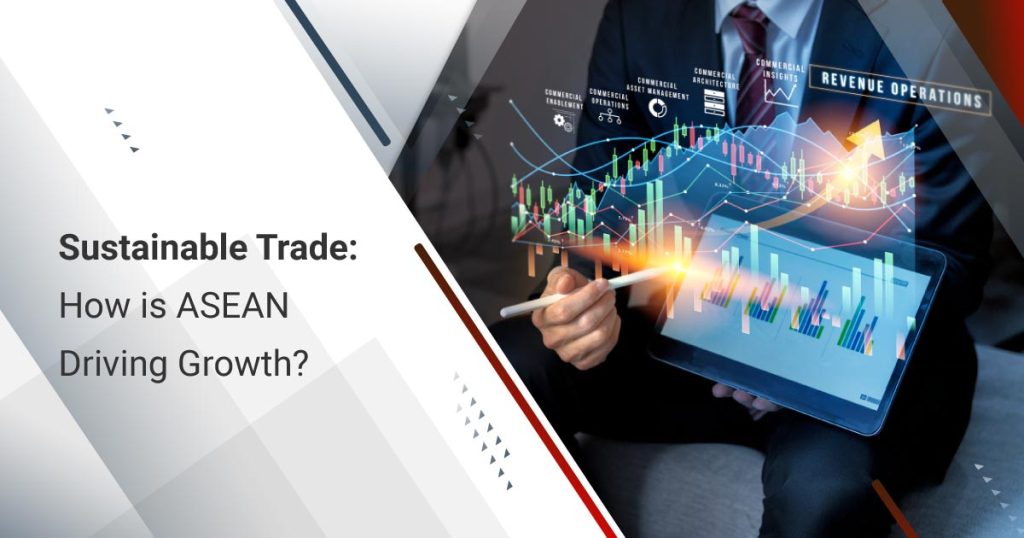Imagine a region where diversity is celebrated and harnessed as a collective force for economic innovation and sustainable growth. This is the vision that ASEAN embodies as it steps onto the global stage, not just as an assortment of nations, but as a unified economic powerhouse.
It is a genuinely optimistic time for ASEAN, a region that is bursting with potential, poised to redefine global trade with its unique blend of cultures, economies, and aspirations.
This shift towards collective strength and cooperation is a game-changer, setting ASEAN on a path to becoming a beacon of economic resilience and prosperity.
In this article, we dive into the heart of ASEAN’s unifying vision, exploring how this vibrant region is leveraging its collective might to drive growth and create a sustainable future.
ASEAN’s Economic Cohesion and Growth Prospects

Harnessing Diversity for Collective Economic Triumph
In the context of ASEAN’s economic narrative, what stands out is not just the growth figures or the projections; it’s the remarkable story of unity in diversity.
Each ASEAN country, with its unique economic backdrop, contributes to a richer, more dynamic regional economy. When these diverse strengths are woven together, they create an economic fabric that is robust, resilient, and ripe with potential.
In a world where economic forecasts often spell uncertainty, ASEAN shines as a beacon of optimistic growth. According to S&P Global, ASEAN is expected to remain one of the fastest-growing economies in the world — a feat that speaks volumes about its collaborative spirit. This is not just about economies sharing borders; it is about sharing visions, strategies, and goals.
ASEAN represents a transformation driven by a deep understanding that their collective power is far greater than the sum of individual efforts. This economic unity is opening new doors – for trade, investment, and innovation.
Singapore: The ASEAN Hub
Singapore’s Strategy within ASEAN’s Economy
Singapore’s story, renowned for its economic acumen and strategic foresight, has positioned itself as the linchpin of ASEAN’s economic integration. In essence, Singapore has become the core of ASEAN’s trade and investment flow, directing a seamless interplay between regional and global economic currents.
The way Singapore harnesses its strategic location and infrastructural prowess to connect ASEAN’s diverse economies cannot be underestimated. It is not just about geography, but a deep-seated commitment to regional economic prosperity.
Singapore’s ability to draw substantial inbound investments and partnerships is a testament to its role as a super-connector, reinforcing the city-state’s significance in the ASEAN narrative.
Its story within ASEAN is a beacon for the rest of the region, showcasing how strategic positioning and collaborative intent can elevate an entire economic bloc.
By serving as a gateway for international investors, Singapore is not just enhancing its economic landscape but is also amplifying the growth potential across all of ASEAN.
China’s Role and the RCEP Agreement
Strengthening Ties: ASEAN and China under RCEP
The economic interplay between ASEAN and China is a significant chapter in Asia’s larger economic story. In this narrative, ASEAN certainly emerges as a partner, but also, as a formidable counterpart to China’s economic might.
The relationship is symbiotic: ASEAN’s growing manufacturing base and infrastructural advancements complement China’s status as a global manufacturing hub.
This synergy is given a strong framework by the Regional Comprehensive Economic Partnership (RCEP), an expansive free trade agreement that binds ASEAN and China together with other key Asian economies.
The RCEP is a milestone in regional economic cooperation, making up 29% of the global GDP and 30% of the world’s population. To put it plainly, RCEP is the biggest trading bloc the world has ever seen.
It promises to streamline trade, reduce tariffs, and foster a more integrated market, benefiting all members involved. For ASEAN, this means unlocking new trade corridors, diversifying its economic interactions, and enhancing its appeal to global supply chains.
The implications of this partnership are momentous, especially as China navigates its economic restructuring. Investment flows, once predominantly China-centric, are finding new avenues in the diverse economies of ASEAN.
The RCEP agreement is a testament to ASEAN’s strategic foresight and its growing influence in shaping regional economic trends.
Challenges and Fiscal Stability in ASEAN
Resilience Amidst Economic Challenges
The ASEAN economic landscape, while marked by robust growth prospects, has not been immune to global economic pressures. The region faced notable challenges in 2023, including currency fluctuations and rising inflation, primarily driven by external factors such as a strong US dollar and increased costs of energy imports.
Yet, the response of ASEAN economies to these headwinds has demonstrated genuine resilience. In contrast to the Asian financial crisis of the late 1990s, today’s ASEAN shows a stronger and more stable fiscal foundation.
This resilience is underlined by significant savings levels, healthier growth rates, and improved employment across many ASEAN countries. Such fiscal robustness is key in addressing inflationary pressures and sustaining economic growth.
This ability to navigate economic uncertainties with resilience and strategic foresight is indicative of ASEAN’s mature economic management. The region’s collective approach to fiscal challenges underscores its capacity to maintain stability and continue its growth trajectory amidst global economic volatility.
ESG Initiatives and Regional Collaboration
ASEAN’s Progressive Leap in ESG
ASEAN is making significant strides in sustainable development, integrating Environmental, Social, and Governance (ESG) principles into its economic fabric.
This commitment reflects a deep understanding that long-term economic sustainability is intrinsically linked to responsible environmental and social practices. ASEAN’s collective approach to ESG issues is not just a response to global trends but a proactive step towards a more sustainable future.
Significant developments, such as the exploration of a regional carbon market, underscore ASEAN’s active engagement in global environmental dialogues.
The progress made by Indonesia and Malaysia’s central banks in advancing ESG disclosures and classifications is also indicative of the region’s dedication to these principles. This collective push towards ESG compliance is more than policy — it is a reflection of ASEAN’s vision to forge a sustainable economic path.

By prioritising ESG, ASEAN is setting a precedent for future economic policies, ensuring that growth is balanced with responsibility and foresight. This approach is central to its identity as a region that values economic prosperity and champions sustainable and ethical practices.
For businesses looking to align with these emerging standards in ASEAN, understanding and integrating ESG principles is crucial.
InCorp’s ESG services offer expert guidance and support in navigating this evolving landscape, helping your business contribute to and benefit from ASEAN’s sustainable economic journey.
Digitalisation and Sustainable Trade
Digitalisation: Powering ASEAN’s Trade Evolution
In ASEAN’s journey towards sustainable trade, digitalisation emerges as a critical enabler. The adoption of digital technologies in trade and finance is not merely a trend but a fundamental shift, enhancing efficiency and transparency across the region’s supply chains.
This digital revolution is particularly transformative in facilitating sustainable trade practices, where technologies like Supply Chain Finance (SCF) play a pivotal role.
The potential of ASEAN’s digital economy is staggering, with projections from BCG suggesting it could grow to as much as US$2 trillion by 2030. This digital growth is democratising trade, opening doors for smaller businesses, and levelling the playing field within the region.
Digitalisation in ASEAN goes beyond economic benefits; it is about fostering a sustainable, transparent, and inclusive trading ecosystem. Through embracing digital technologies, ASEAN is enhancing its trade capabilities and aligning its economic activities with sustainable and responsible practices, positioning itself as a forward-thinking, innovative economic bloc.
Embracing ASEAN’s Future: Your Gateway to Opportunities
ASEAN’s journey is a beacon of innovation and sustainable development, offering a wealth of opportunities for the forward-thinking investor. As the region flourishes, embracing its diverse strengths and digital transformation, the prospects for growth and sustainability are immense.
For deeper insights into this dynamic region and to explore tailored investment strategies, connect with InCorp. Our expertise in ASEAN markets positions us perfectly to guide you through this exciting economic landscape.
Contact our team
Posts not found!
Frequently Asked Questions About Sustainable Trading
What makes ASEAN an attractive destination for investors?
- ASEAN's economic unity, digital transformation, and commitment to ESG principles make it a highly attractive destination for sustainable investment.
How is Singapore contributing to ASEAN's economic growth?
- As the ASEAN hub, Singapore plays a pivotal role in regional trade, acting as a super-connector that amplifies economic growth across the ASEAN region.
How is digitalisation influencing trade in ASEAN?
- Digitalisation is revolutionising ASEAN's trade, enhancing transparency and efficiency, and promoting sustainable practices, especially in supply chain finance.


